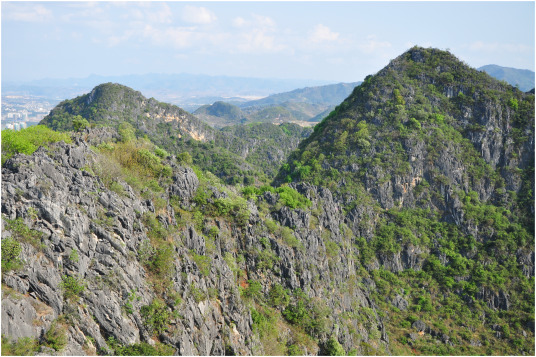
The fig genus (Ficus, Moraceae) is one of the largest woody plant genera in the world. There are about 750 species in total and about 500 of them are distributed in Asia and Australia. Their leaf architectures differ from each other and are highly phylogenetically correlated. Therefore, a fossil Ficus species can be identified to a certain subgenus using leaf architecture.
Researchers from Xishuangbanna Tropical Botanical Garden (XTBG) discovered fossil leaves of Ficus in the early to middle Miocene strata in Wenshan, Yunnan, southwestern China, which is the core of the southwestern China karst region.
After herbarium specimens studies and comprehensive comparison with extant species, the researchers confirmed that the intact fossil leaves are new to science and named the fossil as Ficus microtrivia
The leaf morphology of Ficus microtrivia matches the Pattern-III venation of Ficus. An external secretion structure, veinlet glands, which usually occur in extant Ficus, is also found in the fossil.
The fossil species, Ficus microtrivia
Drawing a historical analogy between the nearest living relatives, Ficus microtrivia
Together with several co-occurring typical limestone shrub taxa from Wenshan flora, the researchers inferred that the shrub vegetation on limestone surfaces already existed in that area during early to middle Miocene times. Karst vegetation may contribute to the biodiversity significantly.
"The discovery of more fossil records, as well as a comprehensive palaeobotanical and vegetation study, are needed to corroborate further and substantiate the hypothesis of a long-existed shrubby karst vegetation type", said Prof. ZHOU Zhekun, principal investigator of the study.
The study entitled "A fossil fig from the Miocene of southwestern China: Indication of persistent deep time karst vegetation" has been published in Review of Palaeobotany and Palynology.

Outlook of an open, shrubby vegetation on

86-10-68597521 (day)
86-10-68597289 (night)

52 Sanlihe Rd., Xicheng District,
Beijing, China (100864)

